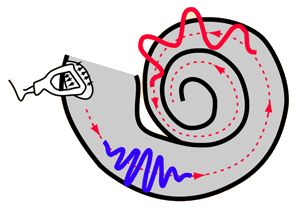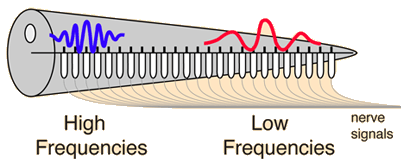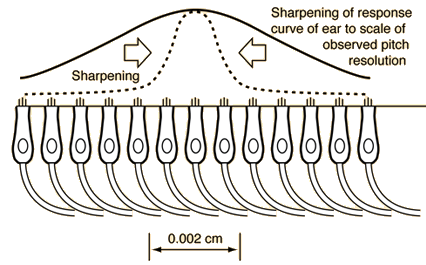Place Theory

|
High frequency sounds selectively vibrate the basilar membrane of the inner ear near the entrance port (the oval window). Lower frequencies travel further along the membrane before causing appreciable excitation of the membrane. The basic pitch determining mechanism is based on the location along the membrane where the hair cells are stimulated. |
| A schematic view of the place theory unrolls the cochlea and represents the distribution of sensitive hair cells on the organ of Corti. Pressure waves are sent through the fluid of the inner ear by force from the stirrup . |

|
The place theory is the first step toward an understanding of pitch perception. But considering the extreme pitch sensitivity of the human ear, it is thought that there must be some additional "sharpening" mechanism to enhance the pitch resolution.
| Role of place theory in distinguishing vocal sounds |
Place theory concepts
Hearing concepts
| HyperPhysics***** Sound | R Nave |
